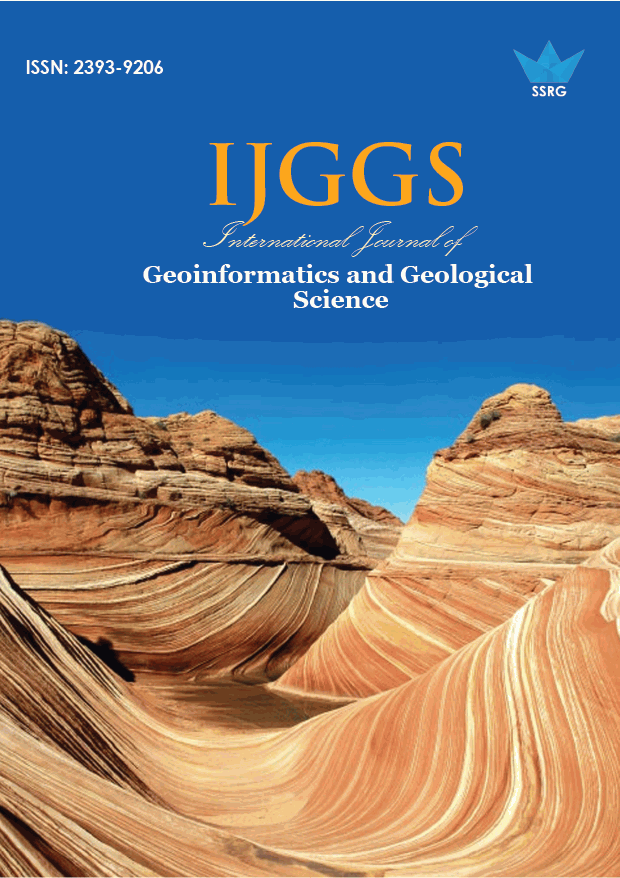The Nature of Universe

| International Journal of Geoinformatics and Geological Science |
| © 2022 by SSRG - IJGGS Journal |
| Volume 9 Issue 1 |
| Year of Publication : 2022 |
| Authors : Marek S. Żbik |
How to Cite?
Marek S. Żbik, "The Nature of Universe," SSRG International Journal of Geoinformatics and Geological Science, vol. 9, no. 1, pp. 21-27, 2022. Crossref, https://doi.org/10.14445/23939206/IJGGS-V9I1P103
Abstract:
The article discusses the problem of the nature of the universe probably troubled people's minds from the moment when abstract thinking gave rise to reflecting on meaning existence. We have abundant evidence of this left by humans since prehistoric immemorial records dating back to the ancient and medieval Stonehenge era. the man slowly managed to find a rational explanation of some mysteries of nature and determine the laws of nature formulated, among other things, by Aristotle, Pythagoras, and Archimedes. Using these discovered laws written in the form of mathematical equations made it impossible to predict certain events and better understand the mechanism before born of quantum mechanics. in the new view of modern science, the universe is an energy-fluctuating spacetime from which elementary particles of matter are still emerging and disappearing, buildings the blocks of the world around us, including ourselves. the most fundamental level universe may consist entirely of time fluctuations on the Planck scale within the spacetime frame. Observation of clusters of galaxies across the observable universe reveals a highly porous cellular structure containing large-sized voids entwined with fibrous threads made of galactic beads intertwined by invisible forces into a “Cosmic Web”. It is proposed that this type of structure, often found in colloidal solutions, may result from electromagnetic interactions rather than from gravitational interactions alone.
Keywords:
Universe, Quantum fields, Time fluctuation, Black holes, The multiverse.
References:
[1] Beck R., Magnetic Fields in Spiral Galaxies, Astronomy and Astrophysics Review, 24(4) (2016).
[2] Born, M. on the Quantum Mechanics of Collision Processes. Magazine For Physics. 37(12) (1926) 863-867. 1926. Bührke T. Forces That Rule in Galaxies, Max Planck Research, 1 (2015) 34-41.
[3] Casimir H.B.G. on the Attraction Between Two Perfectly Conducting Plates. Royal Netherlands Academy Van Westenchapp. Proc. Series B, Physical Science, B51 (1948) 793-795.
[4] Flammarion, C. L'atmosphère: Popular Meteorology. Paris: Hachetta. (1888) 163.
[5] Davis T.M., Lineweaver Ch.H. Expanding Confusion: Common Misunderstanding of Cosmological Horizons and the Superluminal Expansion of the Universe. Astr. Society Aust, 21 (2004)97-104.
[6] Dirac P.A.M. the Quantum Theory of the Electron. Proceedings of the Royal Society of London A., 117 (778) (1928) 610-24.
[7] Einstein, A. on the Motion of Particles Suspended in Liquids At Rest, Required By the Molecular-Kinetic Theory of Heat. Annals of Physics , 322 (8) (1905) 549-560.
[8] Górski K. M., Hivon E., Banday A. J., Wandelt B. D., Hansen F. K., Reinecke M., Bartelmann M., Apj, 622 (200) 759.
[9] Gott III J.R., Juric M., Schlegel D., Hoyle F., Vogeley M., Tegmark M.T., Bahcall N., Brinkmann J. A Map of Universe. The Astrophysical Journal, 624 (2005) 463–484.
[10] Hawking S.W.; Penrose R. the Singularities of Gravitational Collapse and Cosmology. Proceedings of the Royal Society A: Mathematical, Physical and Engineering Sciences, 314 (1519) (1970) 529–548.
[11] Hawking S. A Brief History of Time. Cox & Wyman Ltd, Reading, Berkshire, (1996) .
[12] Heisenberg W. About Quantum Theoretical Reinterpretation of Kinematic and Mechanical Relationships. Magazine for Physics,33 (1) (1925) 879–893. the Paper Was Received on 29 July 1925. English Translation in: Van Der Waerden 1968, 12, Quantum-Theoretical Re-Interpretation of Kinematic and Mechanical Relations.
[13] Klein U. Fletcher A. Galactic and Intergalactic Magnetic Fields, Springer, Heidelberg, (2015).
[14] Lietzen H., Tempel E., Liivamägi L. J., Montero-Dorta A., Einasto M., Streblyanska A., Maraston C., Rubiño-Martín J. A., Saar E. Discovery of a Massive Supercluster System At Z _ 0:47, Astronomy & Astrophysics Manuscript No. Superar Ceso, (2016) 2-4.
[15] Linde A. A New Inflationary Universe Scenario: A Possible Solution of the Horizon, Flatness, Homogeneity, Isotropy, and Primordial Monopole Problems. Physics Letters B., 108 (1982) 6, 389–393.
[16] Linde, A. the Self-Reproducing Inflationary Universe, Scientific American, 9(1) (1998) 98–104. 1998.
[17] Pesic, P. Unheard Harmonies. Music and the Making of Modern Science. Massachusetts Institute of Technology Press. (1914).
[18] Rubin V.C., Ford W.K.Jr., Thonnard N. Extended Rotation Curves of High-Luminosity Spiral Galaxies. IV - Systematic Dynamical Properties, SA Through SC. Astrophys.J.Lett., 225 (1978) L107-L111.
[19] Smolin, L. Quantum Weirdness Isn’t Real – We’ve Just Got Space and Time All Wrong. New Scientist, Physics., (2019).
[20] Susskind L. the Cosmic Landscape: String Theory and the Illusion of Intelligent Design. Back Bay Books, (2005). ISBN 978-0316013338.
[21] Wiltshire D. Timescape Cosmology: Modifying the Geometry of the Universe. Physical Review, D 88 (2013) 083529.
[22] Witten E. String Theory Dynamics in Various Dimensions. Nucl.Phys, .B443 (1995) 85-126.
[23] Żbik MS Flocculated Universe Is the Universe An Electromagnetic Entity? SSRG Int. J. Geoinf. & Geol. Sci. (SSRG-IJGGS) 51(3) (2018) 24-29.
[24] Zbik M.S. the Universe is a Two-Dimensional Membrane on the Event Horizon of the Singularity. SSRG Int. J. Geoinf. & Geol. Sci. (SSRG-IJGGS) , 7(2) (2020) 21. ISSN: 2393 - 9206 www.Internationaljournalssrg.Org
[25] Yau, S-T.; Nadis S. the Shape of Inner Space., String Theory and the Geometry of the Universe's Hidden Dimensions. New York: Basic Books. (2010).

 10.14445/23939206/IJGGS-V9I1P103
10.14445/23939206/IJGGS-V9I1P103